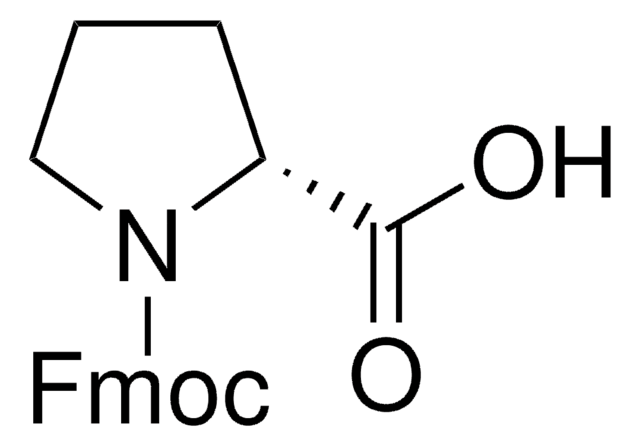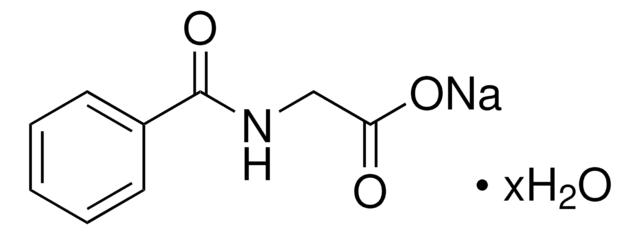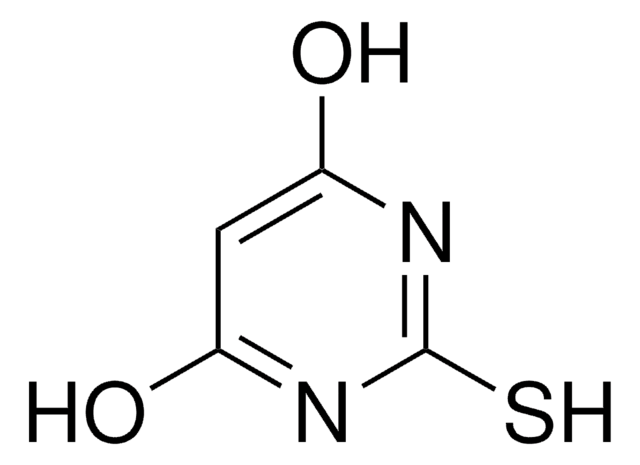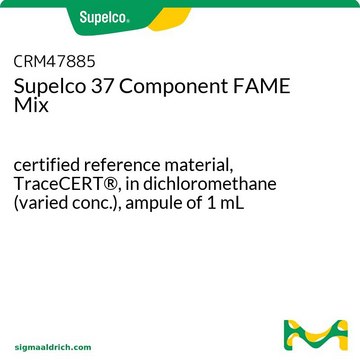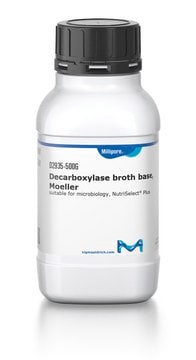49940
ONPG Disks
suitable for microbiology
Synonym(s):
β-Galactosidase Test Disks, 2-Nitrophenyl-β-D-galactopyranoside Disks
Sign Into View Organizational & Contract Pricing
All Photos(1)
About This Item
UNSPSC Code:
41171621
NACRES:
NA.85
Recommended Products
agency
according to GB 4789.4-2016
Quality Level
product line
BioChemika
shelf life
limited shelf life, expiry date on the label
technique(s)
microbe id | specific enzyme detection: suitable
application(s)
environmental
food and beverages
microbiology
shipped in
wet ice
storage temp.
2-8°C
suitability
Escherichia coli
bacteria
General description
ONPG Disks are used to detect the presence of β-galactosidase, an enzyme found in lactose-fermenting organisms. Lactose utilization depends upon two enzymes: β-galactoside permease, which catalyzes transport of lactose into the cell, and β-galactosidase, which breaks down lactose into galactose and glucose. β-Galactosidase is not lactose specific and can act on simple galactosides including the ONPG (o-nitrophenyl-β-D-galactopyranose) substrate. ONPG hydrolysis results in the release of galactose, and the yellow chromogenic compound, o-nitrophenol. The test substrate, ONPG, does not depend on an induced or constitutive permease enzyme to enter the cell, therefore reactions are rapid and occur within a 24-hour period even for late lactose fermenters.
Packaging
Sterile filter paper discs (50 pcs, diameter 6 mm) impregnated with o-nitrophenyl-β-D-galactopyranose
Storage Class
11 - Combustible Solids
wgk_germany
WGK 3
flash_point_f
Not applicable
flash_point_c
Not applicable
ppe
Eyeshields, Gloves, type N95 (US)
Choose from one of the most recent versions:
Already Own This Product?
Find documentation for the products that you have recently purchased in the Document Library.
Customers Also Viewed
Leann Clark et al.
Microbiology (Reading, England), 157(Pt 7), 2072-2083 (2011-04-16)
Most studies on Salmonella enterica serovar Typhimurium infection focus on strains ATCC SL1344 or NTCC 12023 (ATCC 14028). We have compared the abilities of these strains to induce membrane ruffles and invade epithelial cells. S. Typhimurium strain 12023 is less
Our team of scientists has experience in all areas of research including Life Science, Material Science, Chemical Synthesis, Chromatography, Analytical and many others.
Contact Technical Service